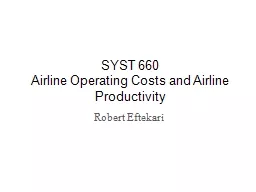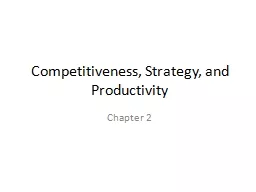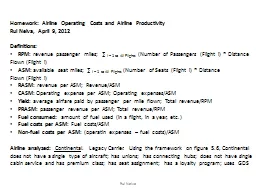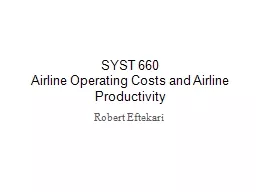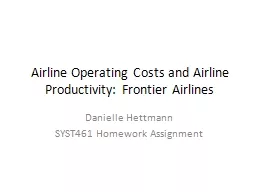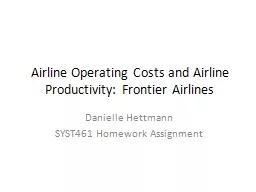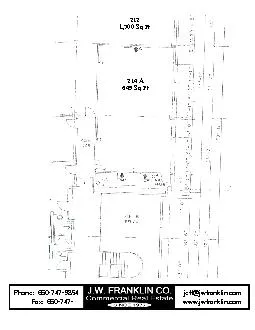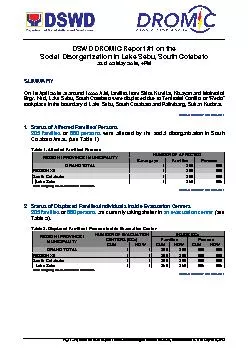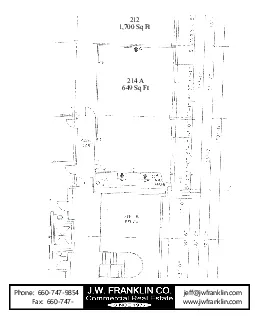PPT-SYST 660 Airline Operating Costs and Airline Productivity
Author : lois-ondreau | Published Date : 2018-11-05
Robert Eftekari Airline Business Model American Airlines is considered a Network Legacy Carrier NLC American is a more traditional airline that operates large hubandspoke
Presentation Embed Code
Download Presentation
Download Presentation The PPT/PDF document "SYST 660 Airline Operating Costs and Air..." is the property of its rightful owner. Permission is granted to download and print the materials on this website for personal, non-commercial use only, and to display it on your personal computer provided you do not modify the materials and that you retain all copyright notices contained in the materials. By downloading content from our website, you accept the terms of this agreement.
SYST 660 Airline Operating Costs and Airline Productivity: Transcript
Download Rules Of Document
"SYST 660 Airline Operating Costs and Airline Productivity"The content belongs to its owner. You may download and print it for personal use, without modification, and keep all copyright notices. By downloading, you agree to these terms.
Related Documents

